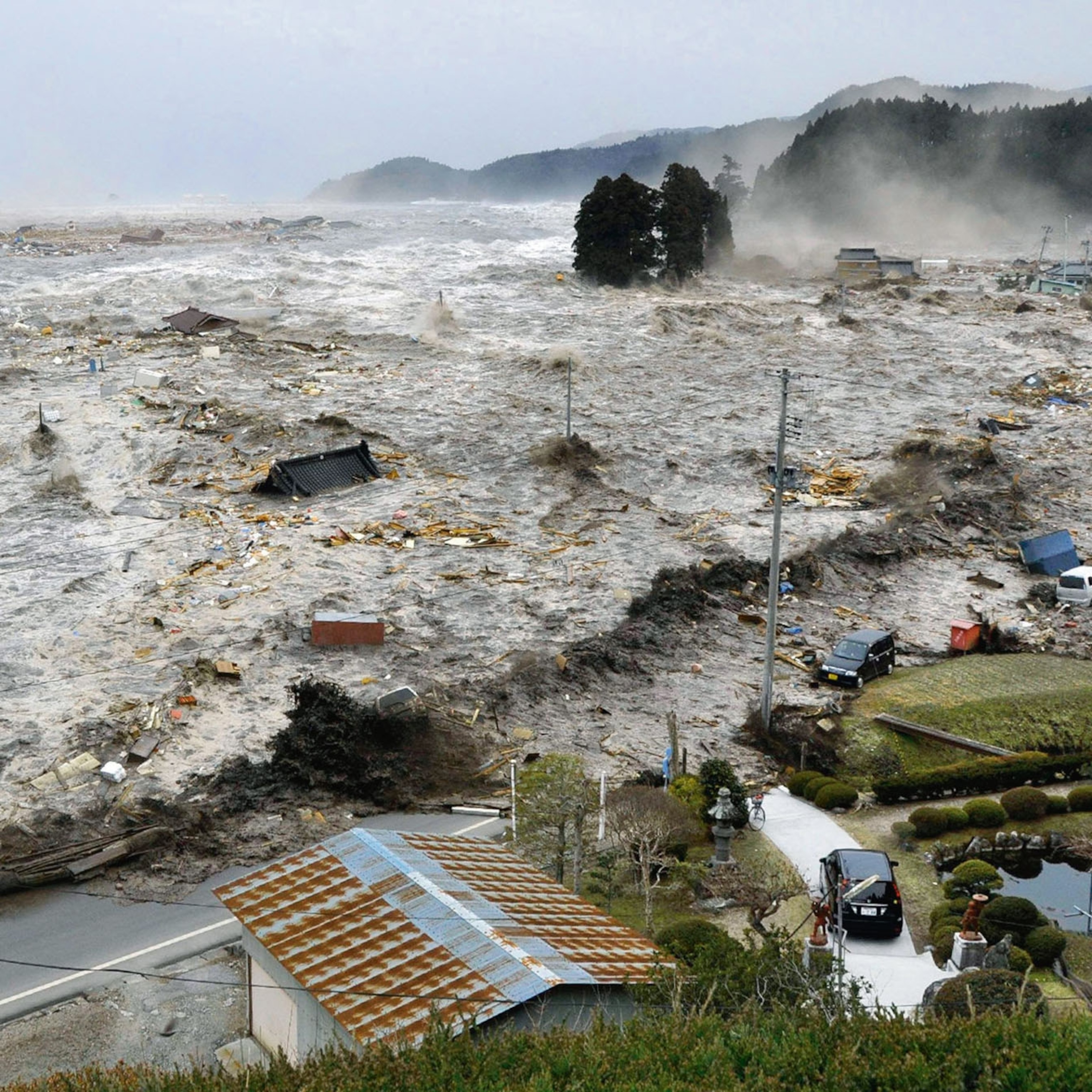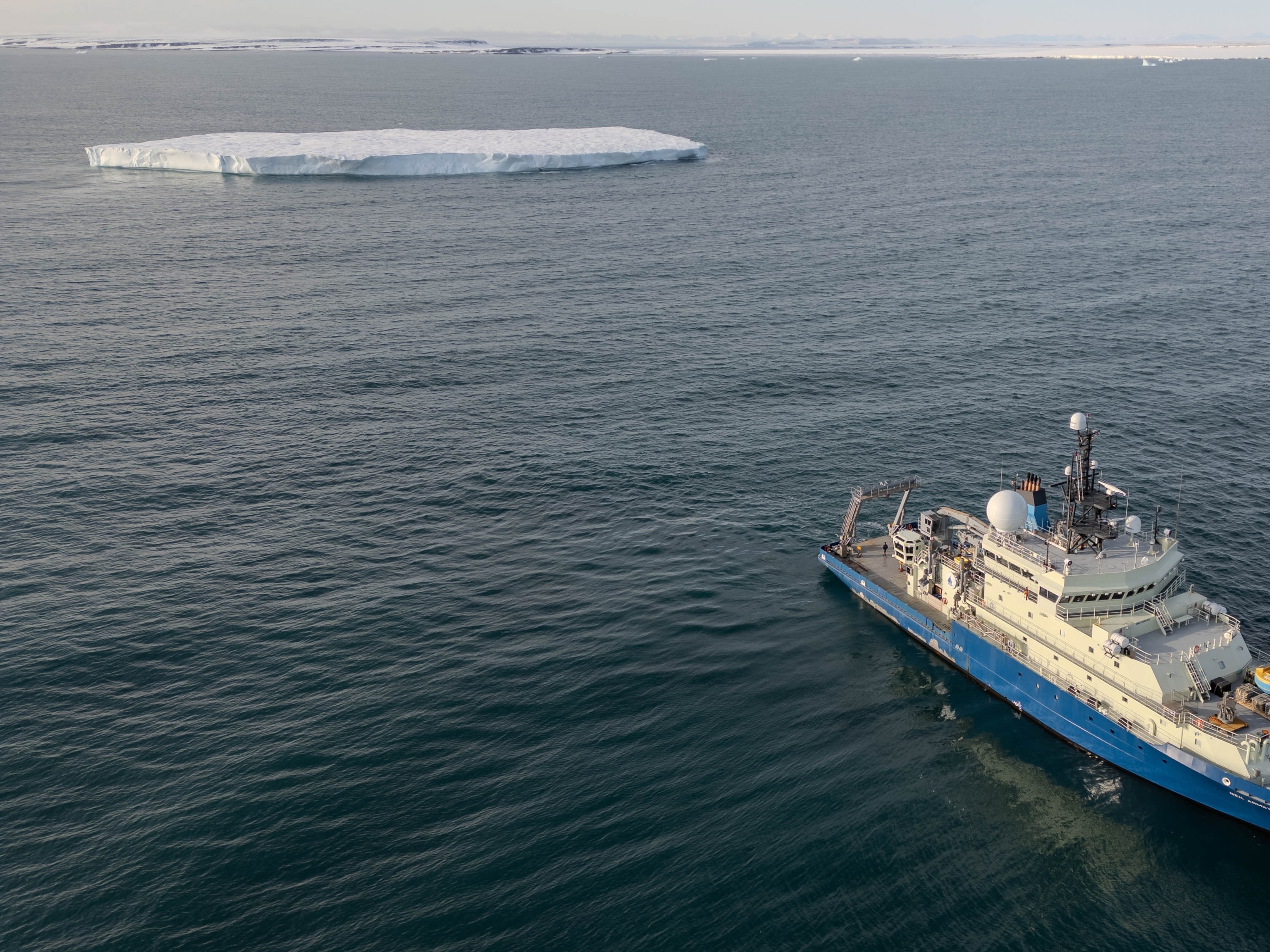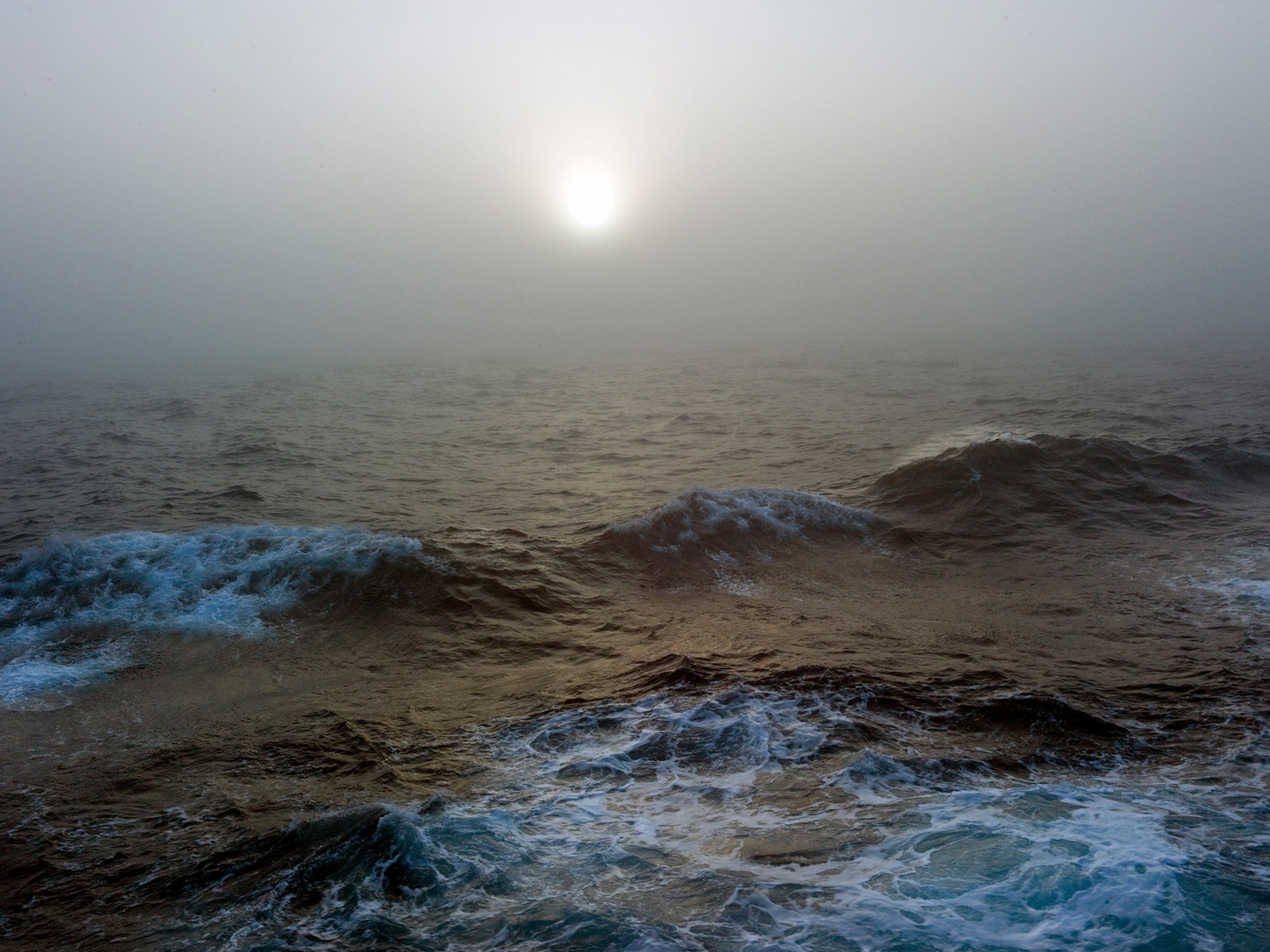
The Atlantic Ocean, explained
The second-largest ocean on Earth, the Atlantic drives our weather patterns, including hurricanes, and is home to many species from sea turtles to dolphins.
For centuries the Atlantic Ocean has been a key avenue of trade and travel. Stretching from the Arctic Circle to Antarctica, the Atlantic Ocean is bordered by the Americas to the west and Europe and Africa to the east.
It's more than 41 million square miles, the second-largest ocean on Earth after the Pacific Ocean.
Scientists and geographers broadly separate the Atlantic in terms of north and south. The North Atlantic and South Atlantic each have distinct ocean currents that influence weather around the world.
Water currents and gyres
The ocean doesn't sit still like water in a sink. It moves more like a conveyer belt that's driven by changes in temperature and salinity over large areas. Both quick-moving surface currents and slower-moving deep ocean currents circulate water around the globe.
The seawater is constantly trying to find a balance. Warm water is less dense than cold water, so as water cools, it sinks, and warm water replaces it. Water with high salinity—more salt—also moves into waters with lower salinity. Those factors drive the conveyer belt, a process also called thermohaline circulation.
Warm water is heated by the Gulf Stream, a warm air current that originates in the Gulf of Mexico. The warm water then moves north, where it forces cooler water to sink and move south. As the current moves toward Antarctica, upwelling pushes cold water back to the surface, pushing the watery conveyer belt around the world. Scientists estimate that it takes the conveyer belt about 500 years to make one trip.
Hurricanes
Without Africa's Sahara Desert, few hurricanes would strike the eastern coast of North America. That's because a wind stream called the African Easterly Jet is formed from the difference in the Sahara's dry, hot air and the humid cooler air to the west and south. The jet pushes westerly winds over Africa's west coast, where they sometimes pick up ocean water and form thunderstorms.
Hurricanes are fueled by warm waters, and warmer Sahara summer winds drive some of the biggest hurricanes seen in the U.S. Those that form off the coast of Africa must survive wind shear (horizontal winds) to hit the East Coast with full force.
Occasionally, as with Hurricanes Florence and Harvey, storms weaken as they make their way across the Atlantic Ocean but are then refueled by warm waters off the East Coast or in the Gulf of Mexico.
Sea life
The Atlantic Ocean is home to a diverse array of sea life, both those we can observe at the surface, and those all but hidden from human eyes.
In December 2018, National Geographic published photos from a deep-sea dive led by ocean research group OceanX. Images revealed the Northeast Canyons and Seamounts Marine National Monument, a federally protected marine area off the coast of Massachusetts, and it is teeming with biodiversity. A variety of corals, fish, and mollusks were found more than 3,000 feet below the sea.
Many other well-known species live in the Atlantic, from dolphins to sea turtles.
After decades of decline, scientists are finding that great white shark populations are growing in U.S. waters. The big fish feed on pinnipeds like seals that are typically found close to shore. Despite widespread fear of the species—heightened by pop culture’s treatment of it—scientists praise the return of great whites as a conservation success story. Recent studies are showing great whites may be venturing farther north near Maine and even as far north as New Brunswick, Canada.
Other species in North Atlantic waters aren't faring as well.
The North Atlantic right whale is steadily heading toward extinction. Just over 400 remain in the wild. The whale earned its name in the early 20th century from hunters who considered it the “right” whale to catch. In the past few years, the whales have been found dead in Canada's Gulf of St. Lawrence from what necropsies show are likely ship strikes. Scientists are also concerned that females, potentially facing environmental stress, are not reproducing at a rate fast enough to rebound the declining population.
Fisheries—the grounds where fishermen take species to be bought, sold, and eaten—will also be impacted by changing water temperatures. A study published in the journal Science showed that some fish populations in the Atlantic have grown while others have shrunk in warming waters. Northern Europe's North Sea, which is part of the Atlantic, has seen several fisheries shrink as a result of warming waters and overfishing, while certain fisheries off the coast of New England have grown.
Climate change
Scientists are quickly trying to understand how our warming atmosphere is changing the Atlantic Ocean.
Instruments moored in the Caribbean have detected that the Atlantic's massive ocean circulation system is slowing down. Some scientists are concerned that if cold Arctic waters become warmer, the temperature difference will not be enough to drive ocean circulation at the same rate it has been moving.
Because the ocean's conveyer belt influences weather over the land masses bordering the Atlantic, a change to the rate of circulation could affect summers, winters, and natural disasters, from the U.S. to Europe. There is even concern that northern Europe could be plunged into a deep freeze if the warm currents that normally head that way stop.
Still, precisely why the currents may be slowing is debated. Some scientists point to climate change and melting glaciers while others argue it is cyclical.
Research published in the midst of last year's active Atlantic hurricane season suggests that storms will become more intense, wetter, and slower as the atmosphere continues to warm. Warm temperatures mean the atmosphere can carry more water, and so the hurricanes that strike the East Coast will dump more rain and cause more flooding in a warmer climate.
As oceans suck up more carbon dioxide from the atmosphere, they're also becoming more acidic thanks to the resulting chemical reactions. Acidic waters can slow the growth of or even potentially kill corals, mollusks, and some species of plankton. Critical food chains can thus be disrupted by this so-called ocean acidification.








